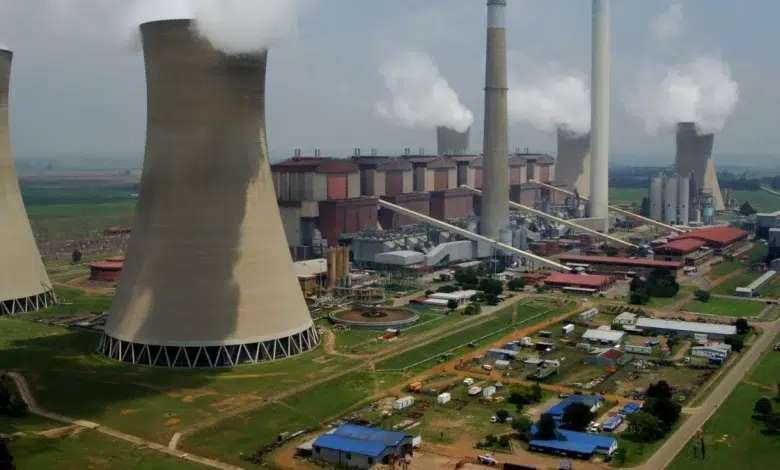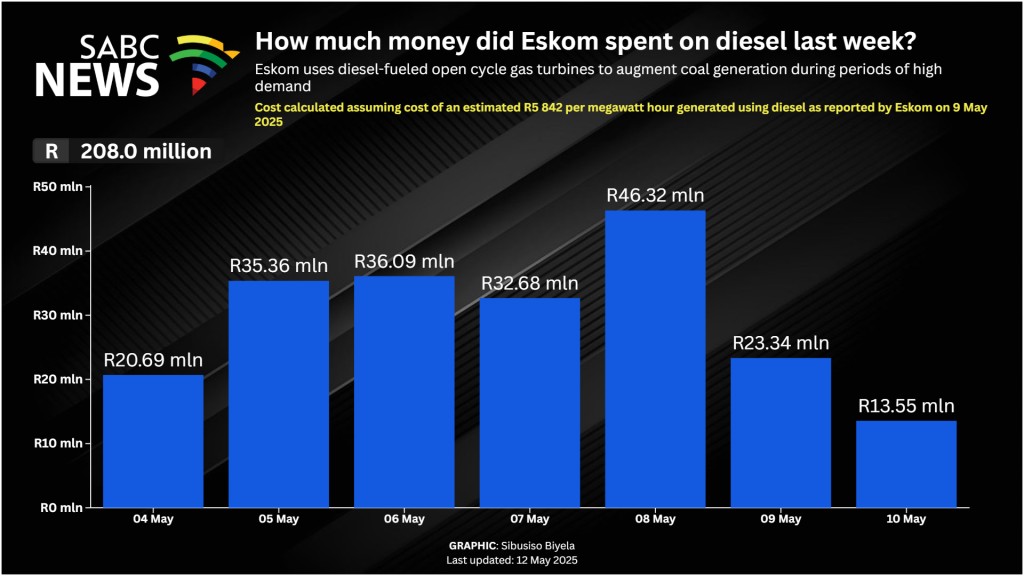Eskom Spends Nearly R6 Billion on Diesel to Prevent Winter Load Shedding

Eskom, South Africa’s national electricity utility, has spent nearly R6 billion on diesel fuel from April to early August 2025 to power emergency diesel generators. This expenditure is part of Eskom’s efforts to maintain electricity supply and prevent load shedding during the challenging winter months when demand peaks and coal shortages persist.
RELEVANT ARTICLE: Gauteng Power Cuts Explained: Load Reduction and Load Shedding Compared
Table of contents
Why Diesel is Used to Prevent Load Shedding
South Africa’s power grid relies heavily on coal-fired power stations, many of which have faced operational challenges causing reduced availability. To stabilize the grid and meet peak electricity demand, Eskom uses open-cycle gas turbines (OCGTs) powered by diesel as emergency backup.
While diesel-powered generation is expensive and environmentally taxing, it is a critical short-term measure to avoid load shedding: the planned, rolling power outages used to balance supply and demand during generation shortfalls.
Recent Diesel Spending and Load Shedding Status
From 1 April to 7 August 2025, Eskom’s diesel spending remained within the allocated budget, reaching nearly R6 billion. This was confirmed in Eskom’s winter outlook report published in May 2025. The strategic use of diesel generators helped Eskom keep the lights on while reducing the need for load shedding during this period.

Despite this, Eskom’s Energy Availability Factor (EAF), a key measure of power station performance, remained below the government’s 70% target, indicating ongoing challenges in coal generation reliability.
The Cost and Economic Impact of Diesel Usage
Diesel-fired power is significantly more expensive than coal or nuclear generation. For context, diesel generation costs Eskom about R6,579 per MWh, compared to R541 per MWh for coal and R113 per MWh for nuclear power. This means diesel generation costs over 12 times more than coal-based electricity.
In April 2025 alone, Eskom burned around R3.6 billion worth of diesel, illustrating the financial strain brought by relying on costly diesel to keep the grid stable. This spending places pressure on Eskom’s finances and, by extension, on South African taxpayers.
Diesel Spending Over Recent Years
Eskom’s diesel expenditure has been rising sharply over the past five years. Between 2020 and 2024, Eskom spent roughly R64.78 billion on diesel:
- R5.8 billion in 2020
- R5.75 billion in 2021
- R8.6 billion in 2022
- R21.25 billion in 2023
- R23.38 billion in 2024
This escalation underscores the ongoing energy crisis and Eskom’s reliance on diesel-powered OCGTs to evade load shedding.
Environmental and Fiscal Concerns
The heavy reliance on diesel generators generates environmental concerns due to high carbon emissions. Moreover, the exorbitant cost of diesel electricity raises questions about the long-term sustainability of Eskom’s emergency generation strategy.
Critics argue that the high diesel spend is a costly “cover-up” that masks Eskom’s inability to reliably generate electricity from its coal plants. They call for urgent investments in coal plant maintenance and renewable energy sources to reduce dependence on expensive diesel generation.
Steps Toward Energy Recovery
Eskom continues to implement its Generation Recovery Plan, aiming to improve coal plant performance and reduce diesel dependency. Recent milestones include commissioning new coal units and planned maintenance programs.
Diesel usage is expected to decline as more units return to service from long-term repairs and maintenance activities are reduced, increasing available generation capacity.
The Winter Outlook, published on 5 May 2025, covering the period ending 31 August 2025, remains valid. It indicates that loadshedding will not be necessary if unplanned outages stay below 13 000MW. If outages rise to 15 000MW, loadshedding would be limited to a maximum of 21 days out of 153 days and restricted to Stage 2.
Year-on-year diesel savings of over R16 billion were reported by the end of 2024, as some improvements allowed less reliance on diesel generators. However, diesel use remains essential during current peak periods and winter 2025.
What Lies Ahead
As South Africa approaches winter and faces heightened power demand, Eskom’s diesel spending is expected to continue playing a crucial role in preventing load shedding. However, this short-term solution highlights the urgent need for faster renewable energy integration, coal plant rehabilitation, and grid infrastructure improvements to achieve sustainable, affordable electricity supply.
The government and Eskom are under pressure to present a credible, time-bound recovery plan that reduces diesel dependency, cuts costs, and secures reliable power for the country.



